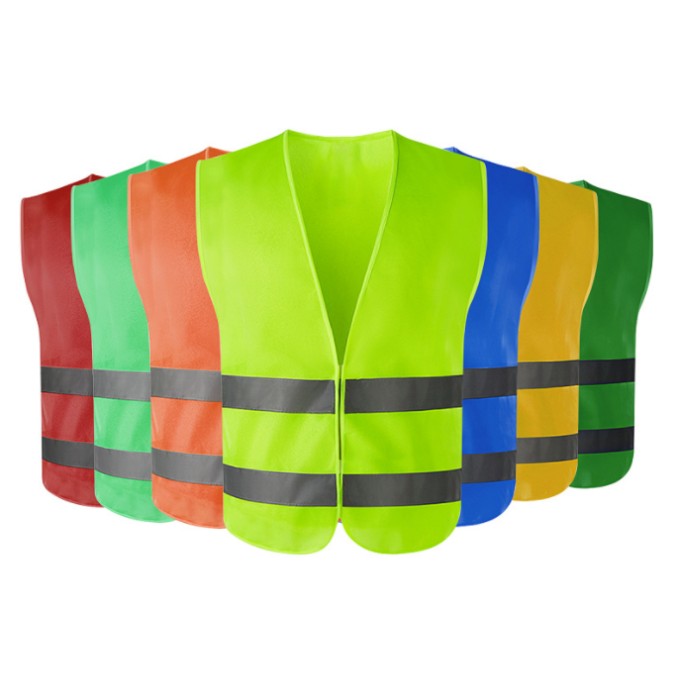Why Are High-Performance Safety Vests Reshaping Workplace Protection?
2025-11-28
A safety vest functions as a critical visibility-enhancing garment designed to protect workers in environments where moving vehicles, machinery, or low-light conditions increase risk.
What Defines a High-Quality Safety Vest and What Core Functions Does It Deliver?
A safety vest is an outerwear layer built with bright fluorescent fabrics and retro-reflective strips that enhance wearer visibility from long distances and in complex lighting environments. Its purpose is to reduce accident probability by ensuring workers remain clearly identifiable during operations. Modern safety vests integrate ergonomic design, breathable materials, and specific utility pockets for industry-specific tasks.
Key Functional Roles of a Safety Vest
-
Visibility Enhancement: Fluorescent colors and reflective strips increase detection sensitivity under sunlight, headlights, or machinery beams.
-
Accident Prevention: High visibility lowers collision risks in roadwork, logistics, factories, construction sites, and emergency response work.
-
Work Identification: Color coding and custom printing support role recognition and site management.
-
Utility Support: Pockets, zippers, radio loops, and ID windows help workers carry tools efficiently.
-
Comfort Optimization: Lightweight polyester and mesh fabrics improve air circulation for long-hour usage.
Technical Parameters of the Safety Vest
| Parameter Category | Specification Details |
|---|---|
| Material | 100% Polyester / Breathable Mesh / Oxford Fabric |
| Reflective Tape | 2" High-Visibility Reflective Strips (ANSI-Compliant) |
| Color Options | Fluorescent Yellow-Green, Orange, Red |
| Closure Type | Zipper / Velcro / Front Buckle |
| Sizes Available | S–5XL (customizable) |
| Visibility Standard | ANSI/ISEA 107 Class 1 / Class 2 / Class 3 |
| Customization | Logo Printing, Pocket Design, ID Holder, Radio Loop |
| Purpose | Road Safety, Construction Work, Warehouse Operations, Traffic Control, Emergency Response |
These specifications enable safety vests to maintain durability, comfort, and compliance with global safety standards.
Why Do Industries Increasingly Depend on Advanced Safety Vests?
As industrial automation expands and mobility becomes faster, visibility risks escalate, making high-performance safety vests indispensable. Many industries experience working conditions with rapidly moving vehicles, electric forklifts, or infrastructure machinery, all contributing to collision hazards. The evolution of safety awareness also drives employers to implement higher-level protective equipment.
Why Safety Vests Matter Across Industries
-
Construction: Heavy machinery, multi-team coordination, and varied lighting conditions require reliable visual identification.
-
Transportation & Logistics: Continuous forklift operations and nighttime loading demand high-visibility apparel.
-
Municipal Engineering: Road maintenance crews rely on reflective gear to stand out amid traffic flows.
-
Emergency Response: Firefighters, rescue teams, and medical responders need immediate recognition.
Why High-Specification Standards Are Important
-
Regulatory Compliance: Many countries require ANSI/ISEA certification for on-site PPE.
-
Risk Reduction: Studies show visibility gear significantly reduces nighttime collision incidents.
-
Operational Efficiency: When workers are easily identifiable, team coordination improves, reducing workflow interruptions.
-
Brand Image: Companies that adopt professional PPE demonstrate responsibility and commitment to worker safety.
How Do Advanced Materials, Smart Design, and Future Trends Shape the Development of Safety Vests?
Safety vest innovation is moving toward intelligent design, improved durability, and sustainability. The how inquiry reveals the technological direction and manufacturing improvements shaping the next generation of protective gear.
How Material Advancements Improve Performance
-
Moisture-Wicking Polyester: Maintains comfort during long work shifts and in warm climates.
-
High-Reflectivity Micro-Prism Tape: Reflects light more efficiently than traditional glass-bead reflective tape.
-
Reinforced Stitching Techniques: Increase vest lifespan even under heavy usage.
-
Breathable Mesh Structures: Reduce heat buildup and enhance air circulation.
How Smart Features Will Influence the Future
The safety vest sector is gradually adopting integrated technology, transforming simple apparel into intelligent safety systems:
-
LED-Integrated Reflective Strips for ultra-low-light visibility
-
GPS or RFID Tags for workforce management and emergency rescue
-
Anti-Snag Fabrics to reduce workplace entanglement hazards
-
Eco-Friendly Recycled Polyester supporting sustainable development goals
These advancements reflect industry priorities—higher visibility, ergonomic comfort, and innovative protection measures.
Industry FAQ: Common Questions About Safety Vests
Q1: How should a safety vest be selected for different work environments?
A: Selection begins by identifying the hazard conditions. For workplaces with vehicle speeds above 50 mph or tasks performed at night, a Class 3 vest offers the highest reflective coverage. Warehouses or low-traffic areas may require only Class 1 or Class 2. Material breathability, number of pockets, customization needs, and closure type should also be matched to industry standards. Ensuring ANSI/ISEA compliance guarantees the vest meets recognized safety requirements.
Q2: How should a safety vest be cleaned and maintained to ensure long-term performance?
A: Safety vests should be washed in cold water using mild detergent and air-dried to protect reflective tape integrity. High-heat drying or chemical bleaching damages fluorescent coloration and reduces reflectivity. Regular inspection for cracks in reflective tape, loose stitching, or faded color ensures safety levels remain effective. Damaged vests must be replaced immediately to avoid compromised visibility.
Value, Application, and Brand Strength
Safety vests remain one of the most influential forms of visibility protection across modern industries. As work environments evolve, so do expectations for advanced materials, improved ergonomic design, and integrated smart technologies. High-performance reflective gear not only enhances worker safety but also streamlines coordination, improves operational efficiency, and strengthens organizational responsibility.
Among professional manufacturers, Xiangying stands out by offering customizable, durable, and standards-compliant safety vests tailored for diverse industries worldwide. For inquiries, quotations, or product customization, contact us to receive professional guidance and comprehensive support tailored to your project needs.



